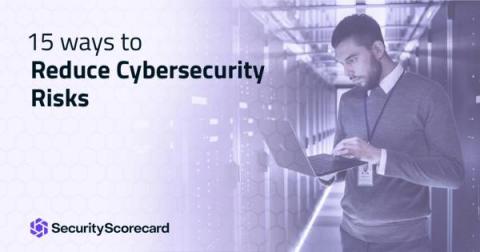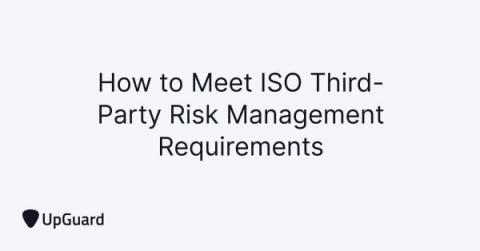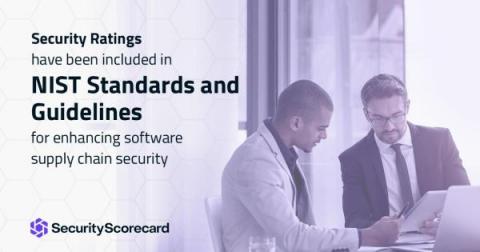Security | Threat Detection | Cyberattacks | DevSecOps | Compliance
Latest News
15 Ways to Reduce Cybersecurity Risks
Organizations are increasingly concerned about cybersecurity risks and with good reason. Risks are constantly changing; take this last year, for example, the pandemic lockdown meant many knowledge workers went remote, which in turn increased the vulnerability of remote desktop services by 40%, saw criminals targeting end-users, and caused phishing and ransomware scams to boom. And then there’s the bottom line.
Meeting ISO Third-Party Risk Management Requirements in 2021
ISO 27001 is the most popular internationally recognized standard for managing information security. Its creation was a joint effort between the International Organization for Standardization (ISO), and the International Electrotechnical Commission (IEC) - this is why the framework is also referred to as ISO/IEC 27001. ISO 27001 can also be implemented into a Third-Party Risk Management program.
NIST Standards and Guidelines for Enhancing Software Supply Chain Security Include Security Ratings
At SecurityScorecard, we believe that making the world a safer place means transforming how organizations view cybersecurity. For us, this means that companies must take a holistic approach, protecting systems not just from the inside, but also knowing what an organization’s vulnerabilities look like from the outside-in to see what the hackers are seeing.
Risk Remediation vs. Risk Mitigation
Remediation and mitigation are words commonly used interchangeably to describe a wide variety of risk management measures within an organization or project. They are, however, distinct concepts under enterprise risk management (ERM) principles, with particular relevance for safeguarding the organization and its stakeholders. Remediation activities focus on fixing a problem to avoid or prevent the arrival of a risk.
Cyber Risk & Indicators of Compromise (IOCs)
Protecting your business against a cyberattack means diligently monitoring for activity that could indicate an attack is in progress or has already occurred. Locating these pieces of forensic data (such as data found in system log entries or files) ultimately helps you identify potentially malicious activity on your system or network.
5 Most Common Cyber Attack Vectors & How to Avoid Them
The rapid pace of technological progress has let companies around the world benefit from operational improvements that lower costs. This progress, however, also brings risks that companies must take into account to protect their stakeholders. Cyber-threats are executed by cybercriminals using various means to gain access to an organization’s digital infrastructure.
What are Information Security Controls?
The possibility of a data breach at your organization can be anxiety-inducing. According to the Ponemon Institute, the average cost of a data breach is $3.61 million, and it’s on the rise; the average data breach cost is up 10% over last year and remote work is a contributing factor: Ponemon found that breaches caused by remote work were $1.07 million more expensive than those that weren’t. This may have your organization wondering if you’re protecting your data in every way you can.
Important Internal Control Activities that Every Organization Should Implement
Every organization needs strong internal controls to ensure the integrity of financial statements and to promote ethical values and transparency across the enterprise. Internal controls are the mechanism to do those things; controls help to identify risks and then reduce them to an acceptable level.
Bot Malware: Protecting Your Business from Botnet Attacks
Cyberattacks can take many forms. Those intended to disrupt a business often happen as denial of service (DoS) attacks, and its even more disruptive cousin, the distributed denial of service (DDoS) attack. Such attacks are often executed by a botnet, which is a network of infected machines or connected devices at the order of a botmaster. Botnet attacks present yet another challenge for security and IT teams focused on cybersecurity.






